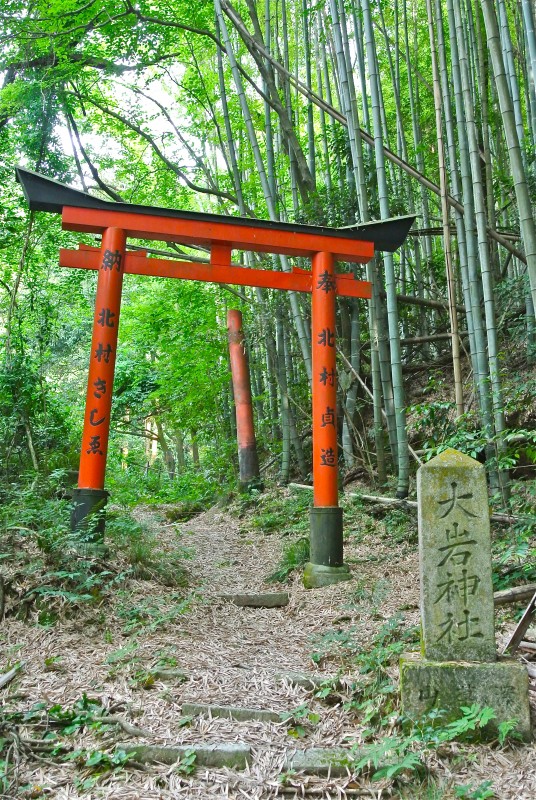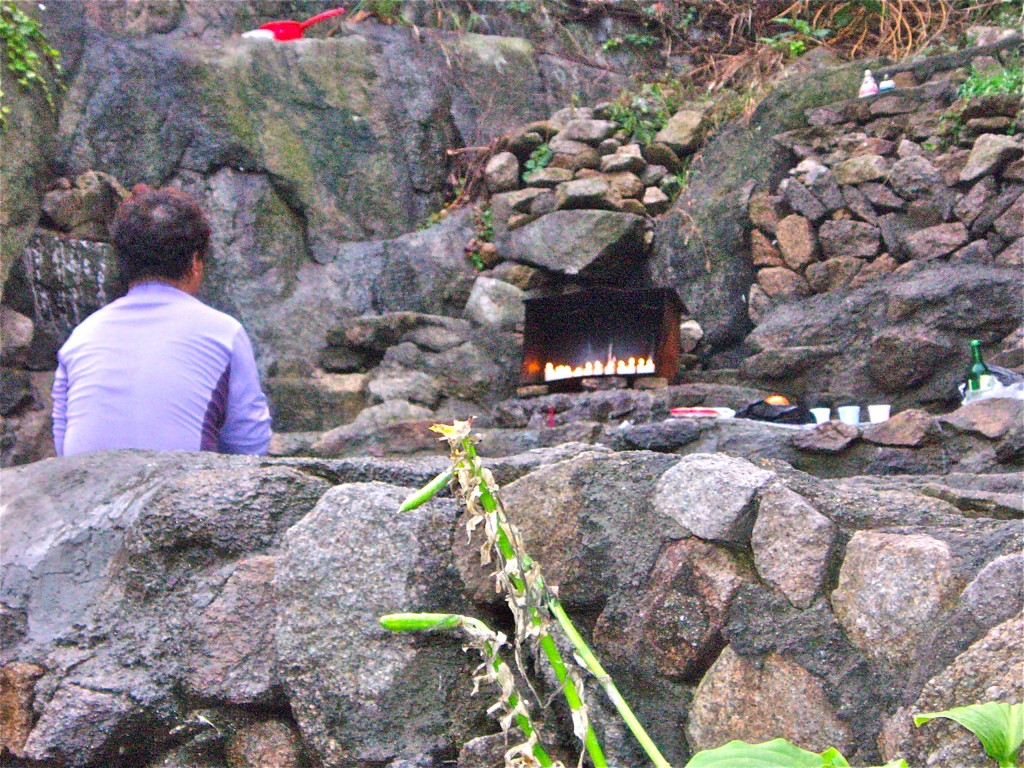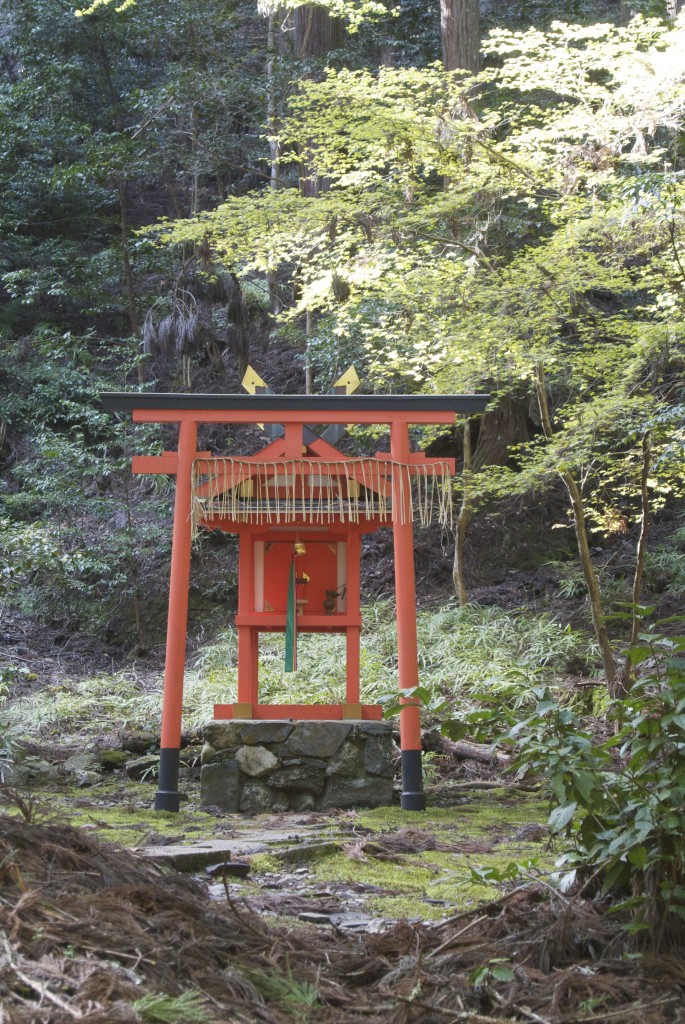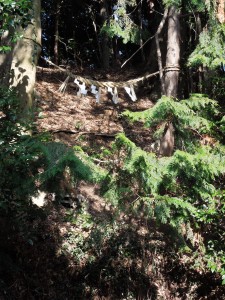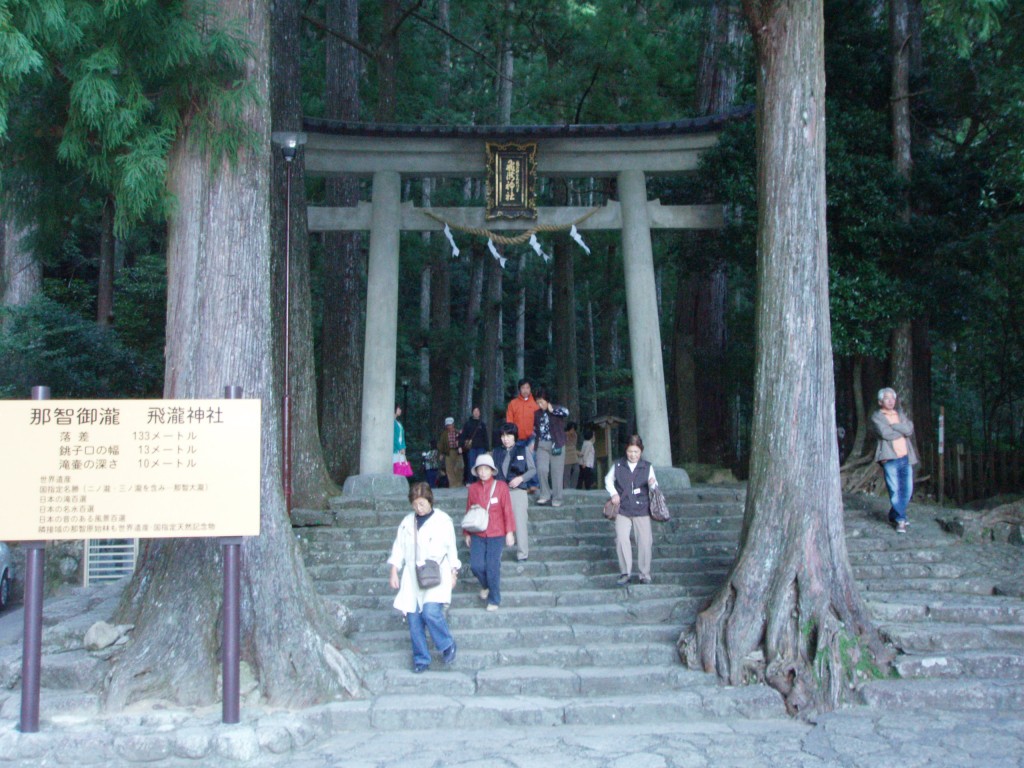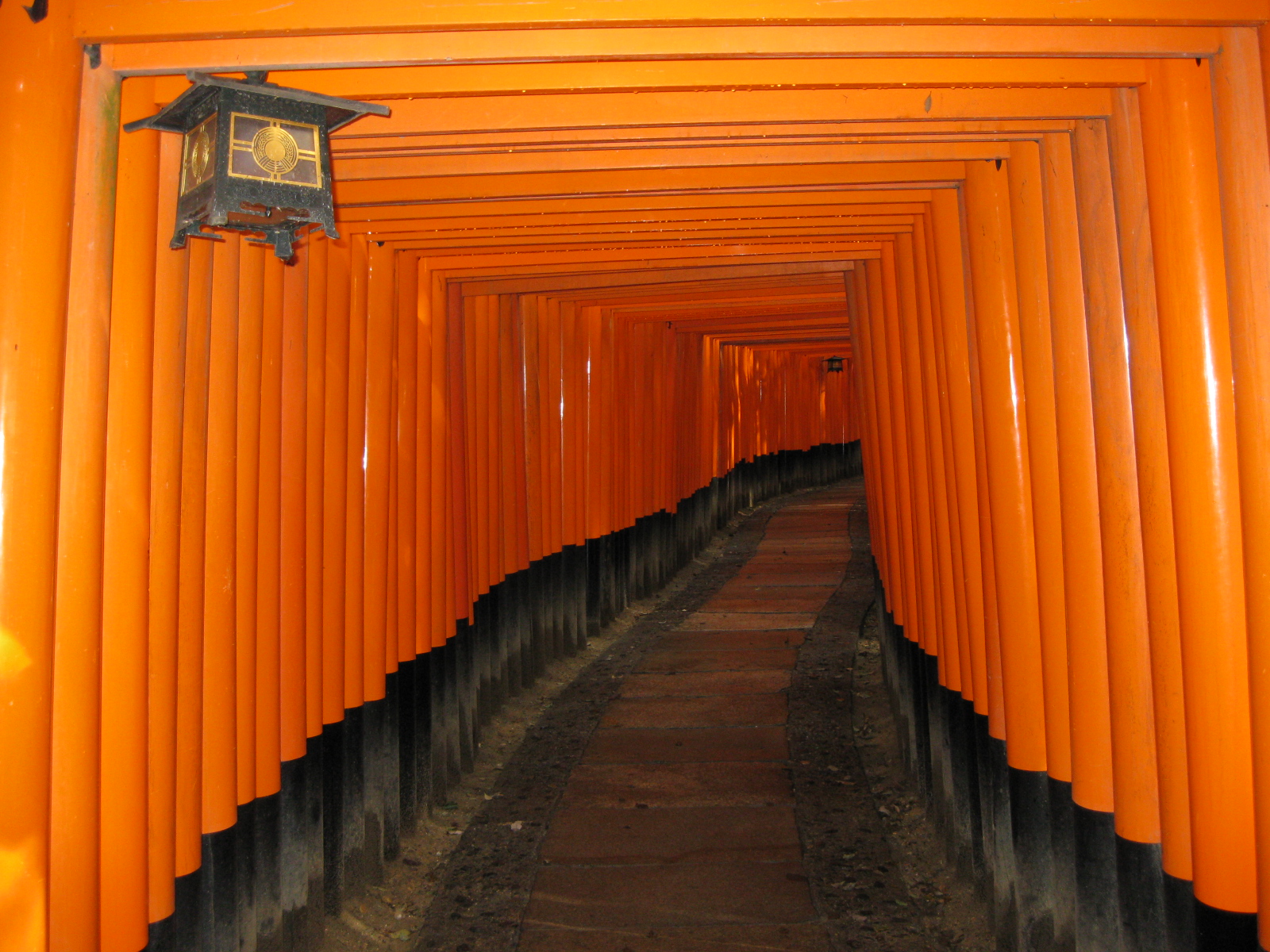
The famous torii tunnel at Fushimi beckons the visitor ever further into the other world
There’s nothing so evocative of Japan as the torii. The stylised gateway is a thing of beauty in itself, but it’s also a symbolic opening that suggests entrance into a different realm. It’s not intended to keep anyone out, and it’s not intended to prevent ingress. Typical of Japanese aesthetics, it frames emptiness – an invisible gate for invisible spirits. The marker divides the sacred from the profane, beckoning the visitor to enter into a special realm. It’s impossible to resist the feeling of being drawn into a different dimension, for it marks the point where this world and the spirit world abut one another. Some say that passing between the pillars is a form of purification in itself, as if there’s a spiritual charge running between them.
Passing between posts is reminiscent of our first entry into the world, and calls us back home as it were by inviting us to seek re-entry into the womb. In casting off the cares of our material world, we return to that garden of Eden before we attained consciousness and self-awareness. We become children – children of the kami.
If you took an aerial photograph of a typical shrine and looked at the layout, you’d see the distinct shape of a uterus. From the vulvic entrance represented by the torii runs a pathway through the woods to a womb-like opening in which stand the shrine buildings. Within that womb is a vertical dimension from which the kami descend as agents of the life-force. Yin and yang are symbolised in the open and closed mouths of the pair of guardian creatures, and the five elements conspire to produce a harmonious whole – wood in the shrine buildings; air in the freshness of the woods; earth in the ground below; fire in the flame that lights the lanterns; running water in the temizuya, and metal in the dragon that feeds it.
Here in the creation of a sacred realm is where spiritual and material worlds come together. The visitors proceed along a horizontal plane, the kami descends unseen on a vertical axis. Refreshed by the encounter, the visitor returns to the world ostensibly the same but reborn in spirit. What better way to mark this magical encounter than with a torii. There is pure nothingness, yet the outer form marks an inner transformation.
*****************
For a piece about the origins of the torii, please see here. There’s more on the subject, with reference to a Kansai Scene article, on this page.
